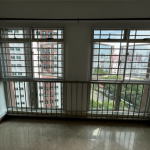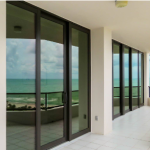Renovating your home is an exciting process, but it can come with hidden dangers—specifically, volatile organic compounds (VOCs) like formaldehyde, which can cause serious health issues. As homeowners, understanding the impact of these chemicals and how to minimize them is essential. This blog will explore what VOCs are, why they are harmful, and practical steps homeowners can take to reduce VOC exposure during renovations.
What Are VOCs?
VOCs are chemicals that easily evaporate into the air, leading to indoor air pollution. Formaldehyde, one of the most common VOCs, is found in building materials like plywood, paint, and resins used in furniture. These chemicals contribute to the “new house smell” and can cause eye, nose, and throat irritation, respiratory problems, and long-term exposure may even be linked to cancer.
The VOC Challenge in Home Renovation
When renovating, homeowners often unknowingly increase their exposure to VOCs. These chemicals are released from materials used in flooring, wall treatments, and furniture, making the renovation process a potential health risk. Even though air purifiers are marketed as solutions for removing VOCs, as highlighted in The Straits Times, there is limited evidence supporting their effectiveness in typical home settings.
Summary of Key Findings from the New Article
The article in The Straits Times ( click the link) reports that while some air purifier manufacturers claim their products can effectively remove formaldehyde, the National Environment Agency (NEA) suggests otherwise. There’s limited data supporting the efficacy of air purifiers in removing VOCs, like formaldehyde, especially in everyday home environments. Experts advise homeowners to opt for ventilation and choose environmentally friendly materials instead of solely relying on air purifiers.
Key findings include:
- The effectiveness of air purifiers in removing VOCs is uncertain.
- Manufacturers like Sterra, Dyson, and Xiaomi claim their devices reduce formaldehyde, but various factors—such as room size, ventilation, and humidity—impact performance.
- The NEA recommends using low-emission building products certified under schemes like the Singapore Green Labelling Scheme.
Practical Actions for Homeowners to Minimize VOCs
Here are actionable steps homeowners can take to reduce VOC exposure during home renovation:
1. Choose Low-VOC and Green Certified Products
Selecting low-emission building materials is a significant first step. Products that carry certifications like the Singapore Green Labelling Scheme or the Green Building Product Certification are designed with lower VOC content. These labels ensure that the materials used, such as paints, adhesives, and furnishings, release fewer harmful chemicals into your living space.

2. Increase Ventilation
During renovations, one of the most straightforward methods to reduce VOC buildup is to improve ventilation. Open windows and doors, and consider installing exhaust fans to help air out the space. This allows formaldehyde and other VOCs to escape into the outside air rather than lingering indoors.
3. Prioritize Natural and Eco-Friendly Building Materials
Whenever possible, opt for natural wood, low-VOC paints, and adhesives. Materials like untreated wood or low-VOC carpets can significantly reduce indoor air pollution. Instead of choosing composite wood, which often contains formaldehyde, select solid wood furniture and finishes. Or you may consider using aluminium, metal or ceramic tiles material.
4. Be Cautious About Air Purifiers
While air purifiers are marketed as a solution, their effectiveness in removing VOCs is still under question. As the article points out, there is limited data on how well these devices work in everyday household environments. If you do choose an air purifier, consider one equipped with activated carbon filters or photocatalytic oxidation technology, as these are more likely to trap or break down VOCs like formaldehyde.
5. Regularly Replace Filters
For air purifiers or HVAC systems to work effectively, regular maintenance is crucial. Ensure that filters are replaced according to the manufacturer’s guidelines to maintain proper functionality. Clogged or dirty filters can reduce airflow and limit the purifier’s ability to remove harmful particles or gases.
6. Avoid Ionizing Air Purifiers
Ionizing air purifiers, while popular, can generate ozone, which may worsen asthma and cause respiratory problems. Instead, choose purifiers that rely on mechanical filtration, such as HEPA filters combined with activated carbon layers.
7. Let Renovated Spaces Sit Before Moving In
If possible, allow renovated spaces to “air out” for a period before occupying them. This will help dissipate the VOCs that are initially released from new materials. Keep windows open during this time and, if available, use a fan to circulate fresh air through the space.
8. Invest in VOC Sensors
To monitor indoor air quality more accurately, you can invest in VOC sensors. These devices provide real-time data on the presence of harmful chemicals, allowing you to take necessary actions like increasing ventilation when VOC levels rise.
The Impact of Formaldehyde on Health
As noted in the article, formaldehyde is not just a nuisance—it’s a serious health risk. In high concentrations, it can cause irritation of the eyes, nose, and throat. Long-term exposure has been linked to various cancers. Formaldehyde is particularly prevalent in resins and glues used in wooden furniture, which is why reducing your exposure during and after renovations is essential.

What to Do If You Suspect High VOC Levels
If you’ve recently renovated your home and are experiencing symptoms like eye irritation, breathing difficulties, or skin reactions, it may be due to high VOC levels, particularly formaldehyde. In such cases:
- Ventilate the space as much as possible.
- Consider using activated carbon filters to absorb harmful gases.
- Contact a professional for indoor air quality testing.
Government Action and Future Regulations
The article also touches on government efforts to address formaldehyde concerns. From 2026, formaldehyde will be banned in paints used for the interiors of buildings in Singapore. This is a positive step toward reducing VOC exposure in homes, but for now, homeowners should take proactive measures.
Conclusion
While air purifiers can play a role in removing certain VOCs, their effectiveness, particularly in typical home settings, remains in question. The best approach for homeowners is to minimize VOCs at the source by choosing low-emission materials, increasing ventilation, and understanding the limitations of air purification devices.
If possible, do not move in the newly renovation house and allow your move in furniture is allowed to air as long as possible. Do not stay in immediately and should keep the window and door open, on the fans and ventilate the place as long possible.
By taking these steps, you can enjoy a freshly renovated home without the harmful side effects of VOC exposure.
Contact 9reno and explore how you can renovate your house with mininium use of VOC related building products.
Further reading :
- The Hidden Dangers of Choosing an Interior Design Firm: How to Avoid Costly Renovation Nightmares
- Should Interior Designers Be Licensed? Why Regulation Could Transform the Renovation Industry Singapore
- Flooring Handyman Repair Near Me: Common Flooring Issues and Repair Solutions in Singapore
https://www.youtube.com/shorts/-RKxGcPIzXE







